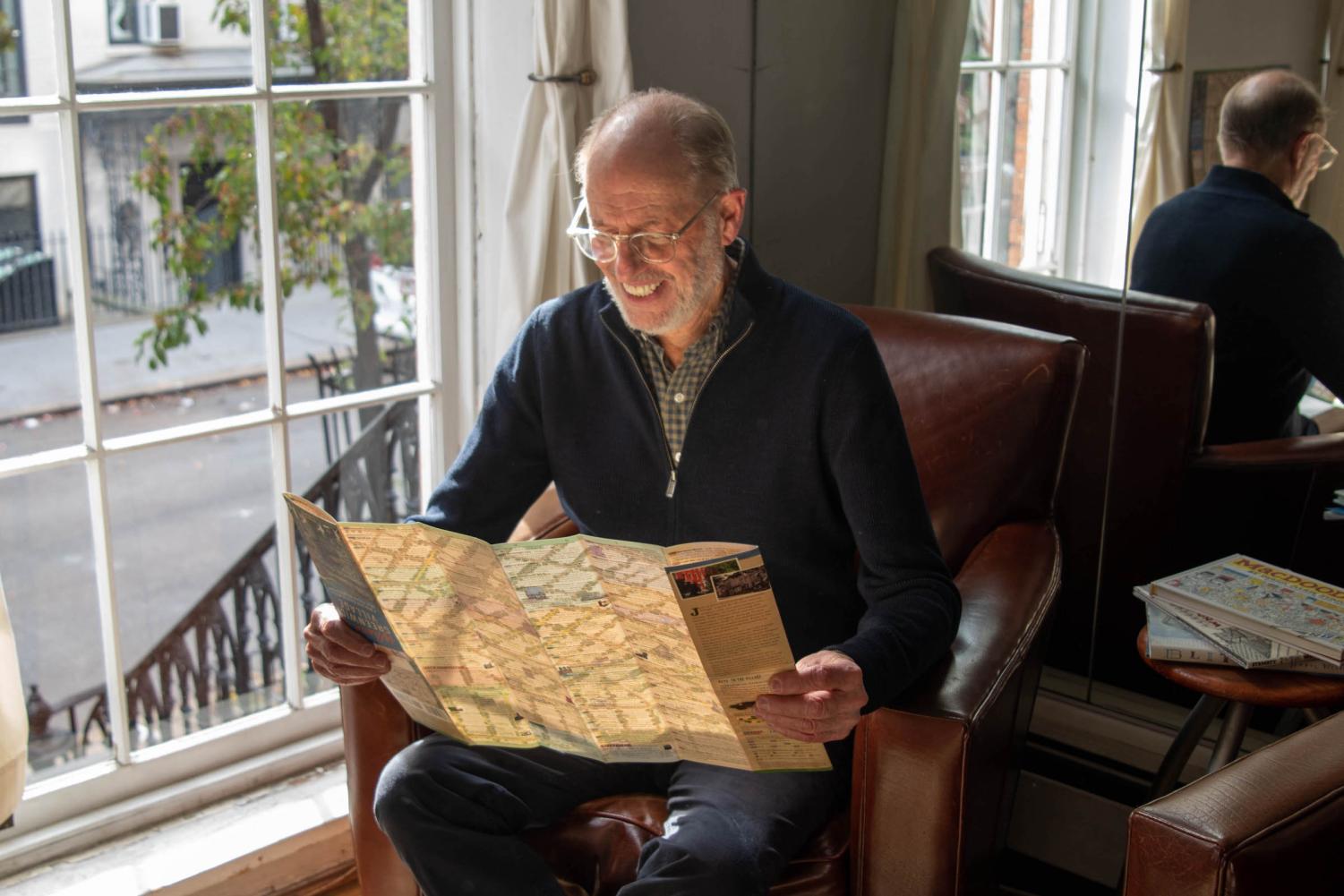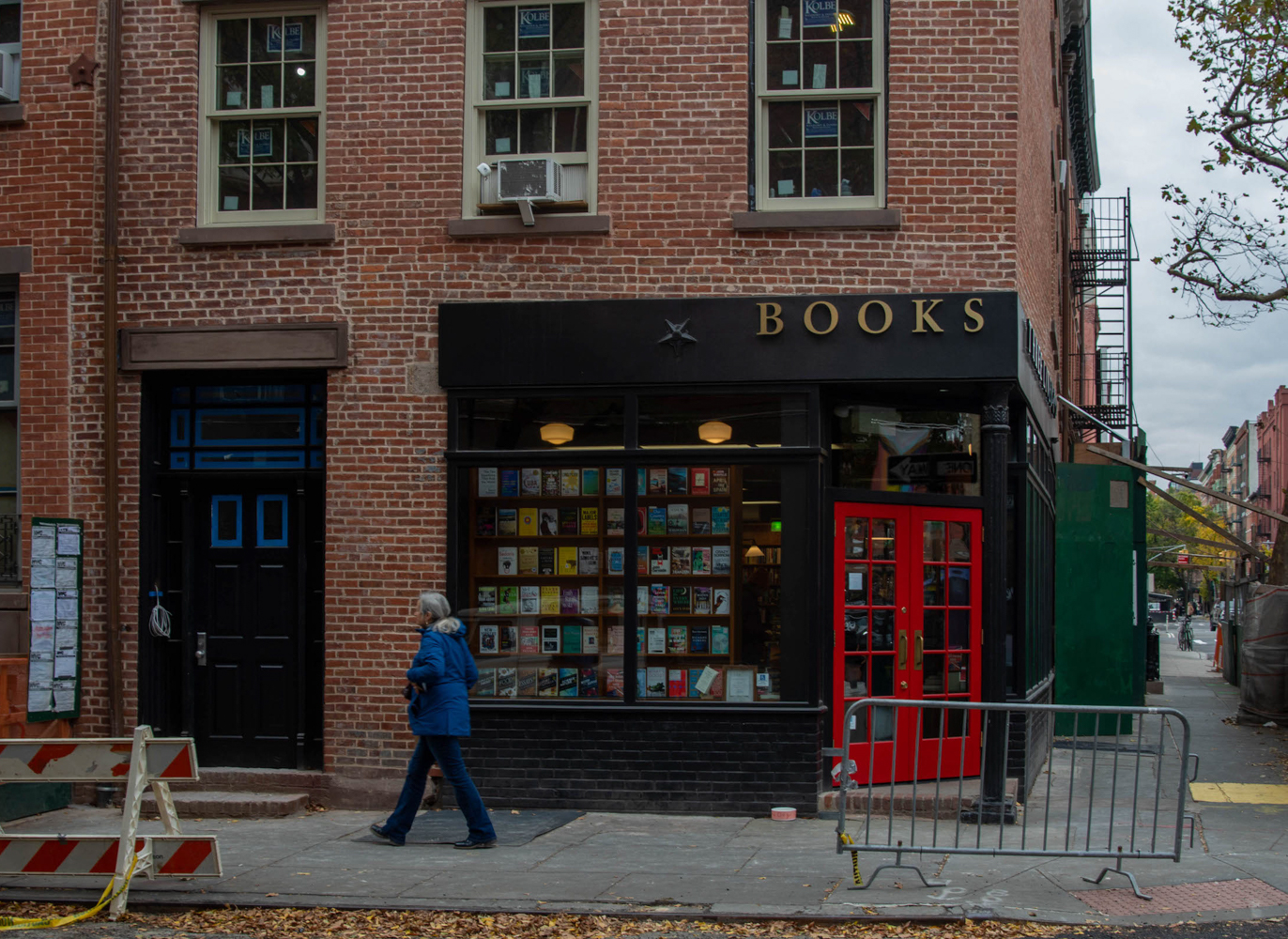I first met Alan Grossman on the corner of MacDougal Street and Washington Square South. Not knowing what Grossman looked like — only that he was a longtime Greenwich Village resident and mapmaker — I scoped out the area, wondering how I might find him. A couple of minutes passed, and I finally spotted a lean, white-haired man holding a small notebook with some index cards and a folded map tucked inside, with a cover that read, “Where is Greenwich Village?”
Take a trip through the home and life of Greenwich Village’s mapmaker.
‘Where is Greenwich Village?’
A mapmaker’s mission to document a storied neighborhood
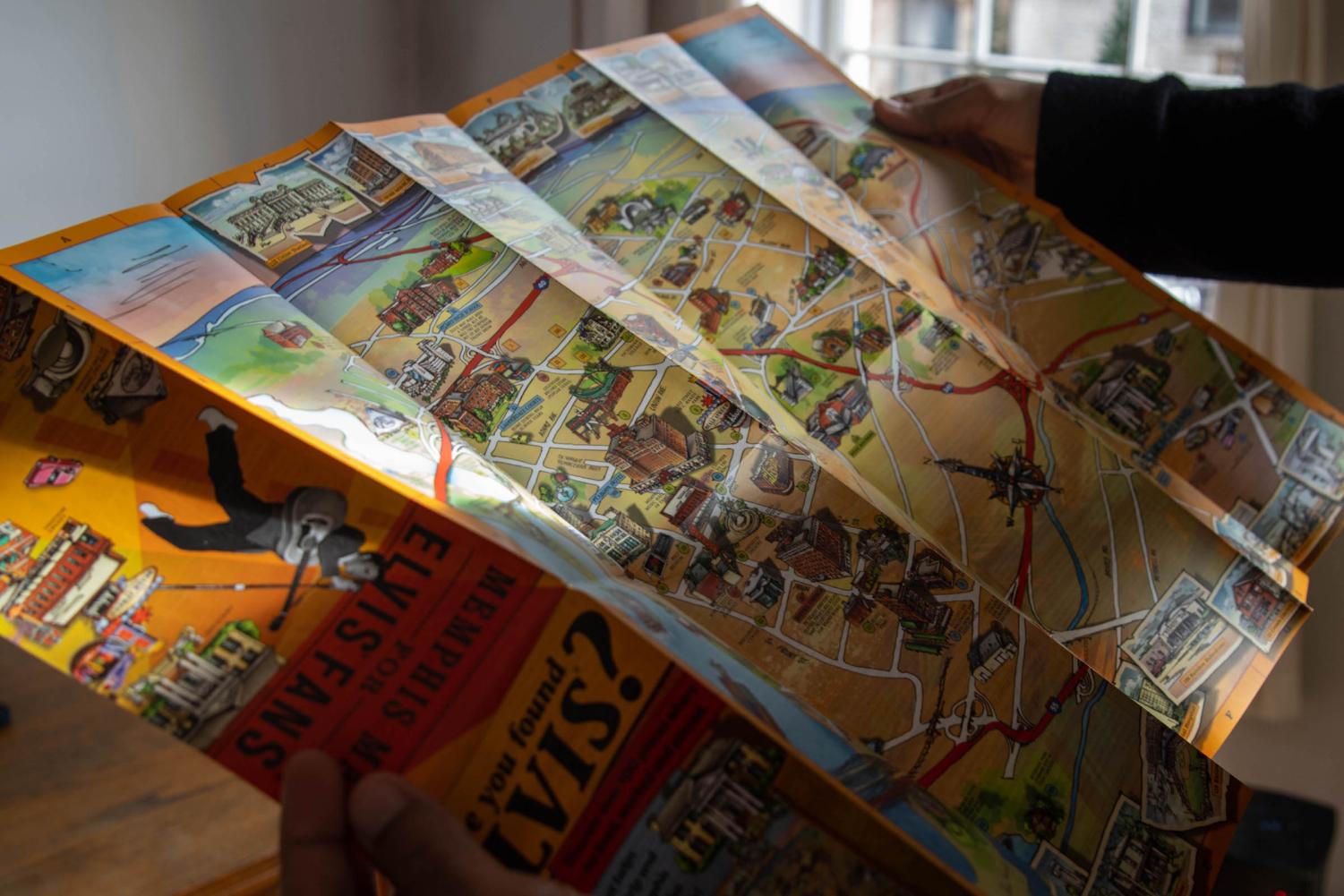
Grossman, 77, is a retired lawyer who has called Greenwich Village home for the past 47 years. We took a seat at one of the chess tables in Washington Square Park, and Grossman began to recount his nearly decade-long journey of constructing an intricate map of the neighborhood he has lived in for most of his life. The project was first devised alongside Grossman’s late wife, Andrea Shaw, and a team of his Greenwich Village friends. Its precursor, an Elvis-themed map from a trip to Graceland, came to be after Grossman and Shaw made it their mission to find all of Memphis’ treasures.
After 30 trips back and forth, many hours of research, and the help of some friends, the couple had an authoritative, illustrated map of what Elvis fans must do during a visit to Memphis. They had so much fun producing that first map that they decided to next focus on documenting their own neighborhood.
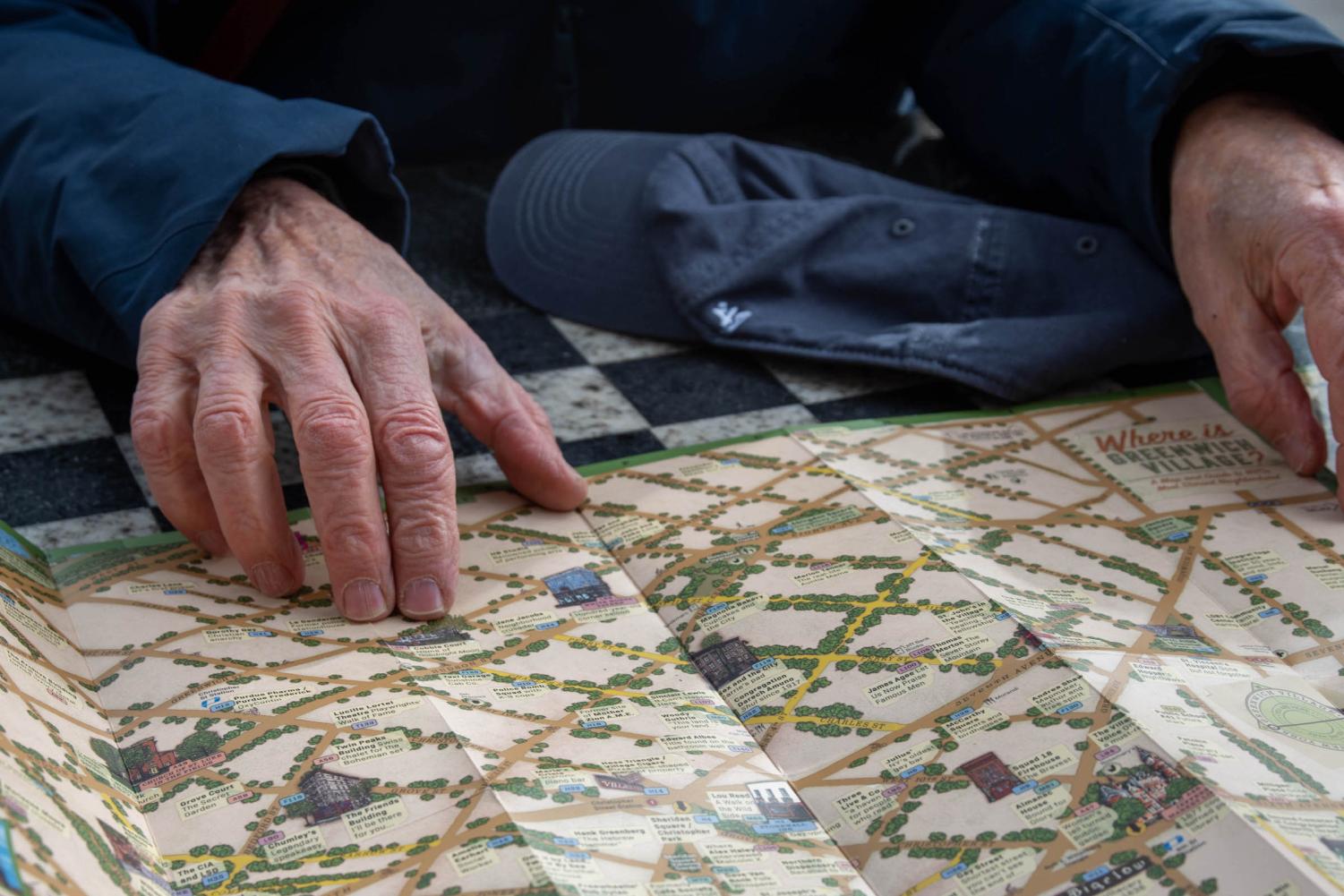
Grossman spread the map of Greenwich Village out on the chess table, pointing to some of its key areas — most of which I was unfamiliar with. I couldn’t help but feel embarrassed by my lack of neighborhood knowledge. As a senior at NYU, I assumed I would know more about the area of New York City that has become synonymous with this school, or rather, the area that NYU has co-opted to the point of making the two seem synonymous. I could attribute my lack of knowledge to the semesters on campus lost to the pandemic, the fact that living in the Village is out of my price range or that after the initial months of living in a dorm, I ultimately got bored of life in the immediate vicinity of my residence hall.
My view of the neighborhood was so intertwined with NYU and the monotony of being in school that I hadn’t bothered to give it a fair chance. I tended to keep my outings to the East Village and the Lower East Side, both more proximate to my apartment.
I was relieved, and surprised, when Grossman described having similar feelings.
“All I knew was where the subway entrances were, where the cheapest restaurants were … Twenty years later and I got more accustomed to what the Village has to offer, but really the map has pushed me to learn more about the neighborhood.” As a resident of Charles Street, Grossman was excited to share his favorite places.
One such location is 184 Waverly Place, the setting of Edward Hopper’s “Drug Store,” painted at the outset of the Great Depression. That same corner now houses a used bookstore called Three Lives & Company. Like Grossman, Hopper was also invested in the documentation of Greenwich Village, and advocated against the gentrification of the neighborhood — and, in Hopper’s case, the role NYU played in it.

Another stop on Grossman’s tour of the Village was the “Goodnight Moon” house at 121 Charles St. Formerly located on the Upper East Side at 1335 York Ave., the house was home to Margaret Brown, author of the bestselling children’s book “Goodnight Moon.” Having grown up with the book, I marveled at the pristine wooden house, and the fact that if it wasn’t for Grossman and his map, I never would have known that on March 5, 1967, the entire building had been placed on a flatbed truck and lugged across Manhattan to its current home, steps away from where I live and work.
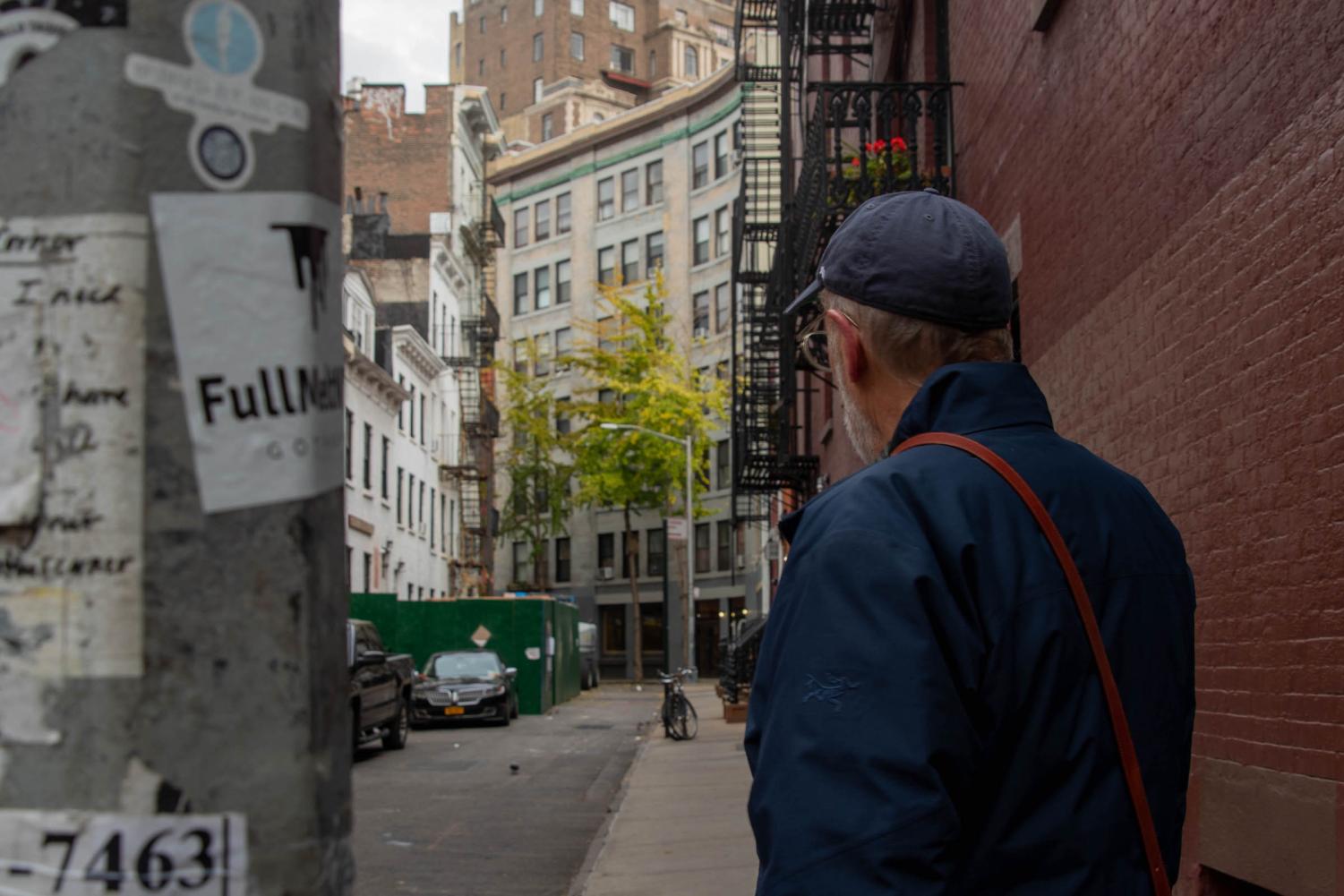
After stopping at Gay Street, the scene of a recent controversial demolition, we made our way to our next site, a flashy, shockingly pink building — the Palazzo Chupi. Grossman explained that the unique building houses an art studio and a vast art collection.
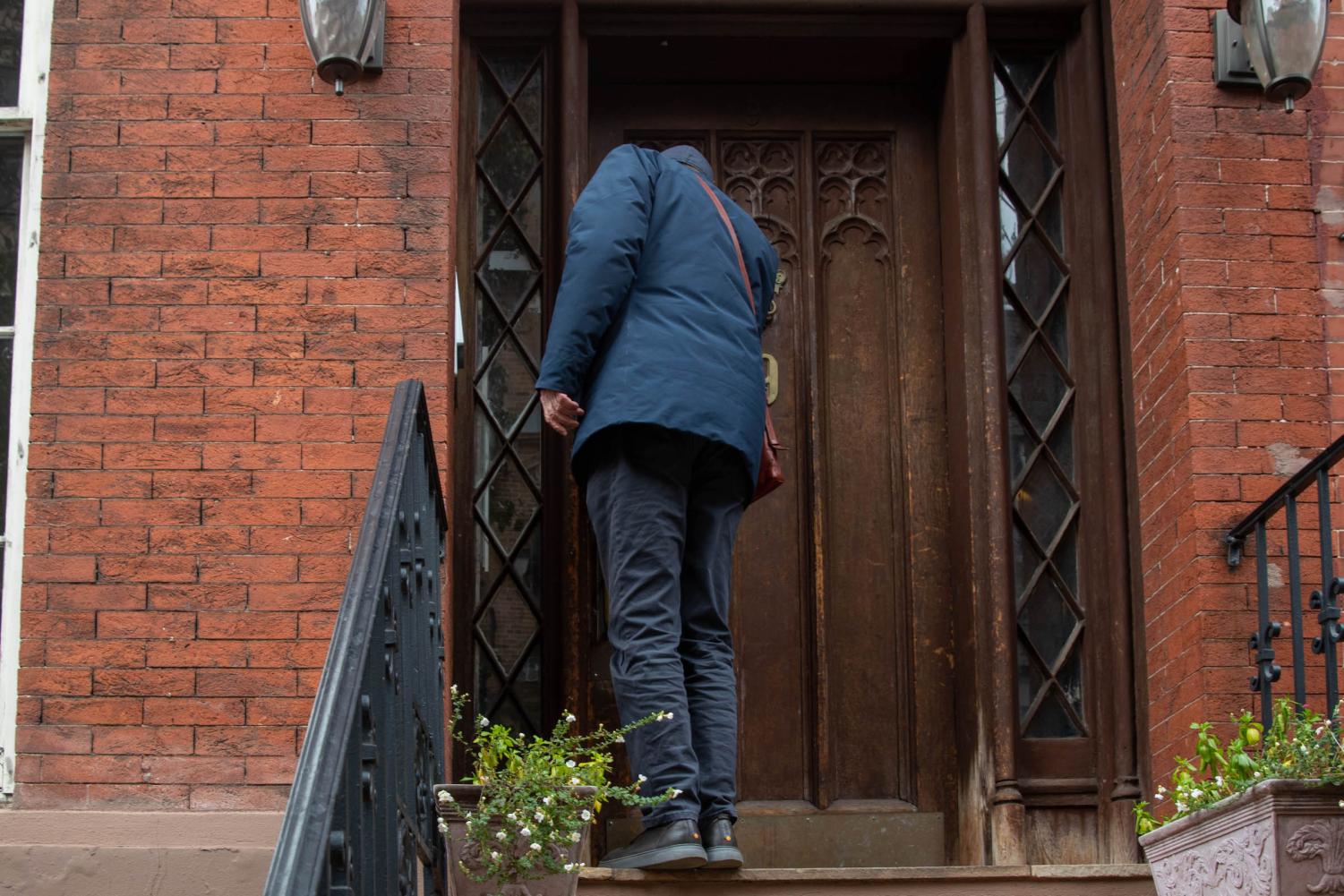
The final stop, my favorite, was Grossman’s home and studio — housed within a classic Greenwich Village brownstone.
Grossman’s studio, which encompassed the entire top floor of a sunny duplex apartment unit, was brimming with Greenwich Village-themed books, maps, vintage knick-knacks and memorabilia. Eclectic posters and artwork lined the walls, and the fridge was covered in photos and souvenir magnets. The place was uniquely Grossman’s. His curated collection of items captured the 47 years he has spent in the Village, and his dedication to becoming a neighborhood expert.
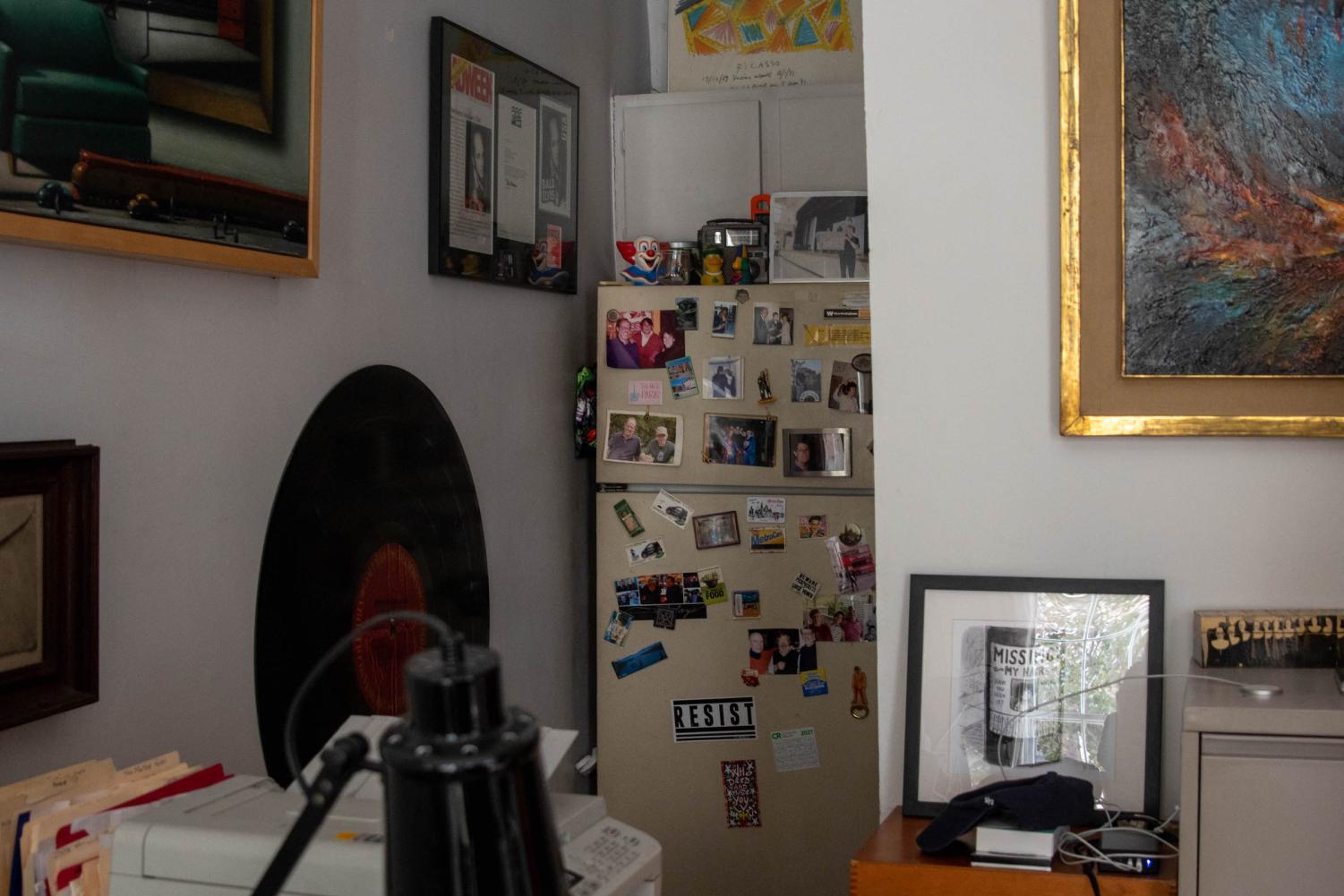
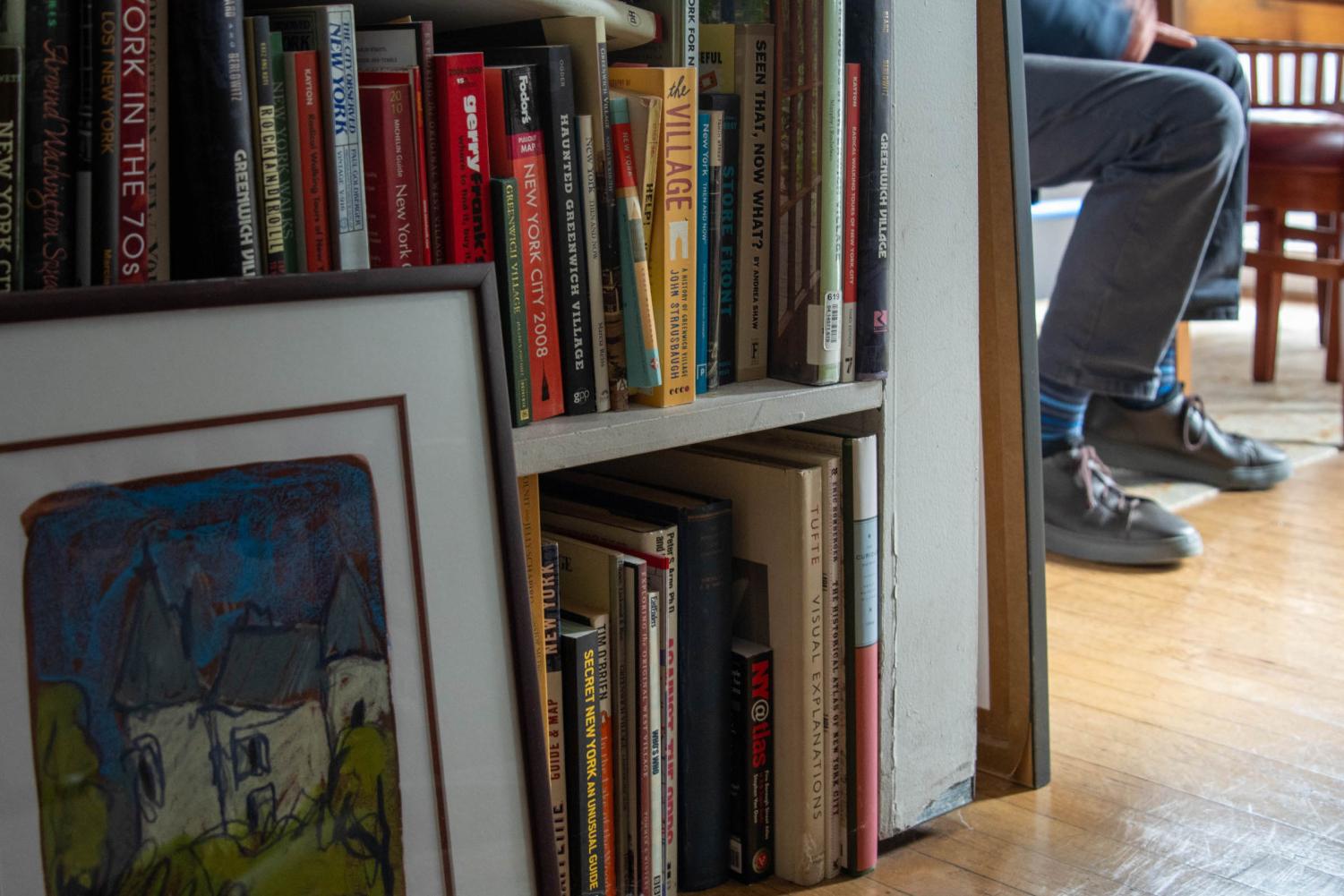

To provide a full picture of the mapmaking process, Grossman pulled out the many iterations of his map of Greenwich Village — all produced in partnership with designer Michael Kelly. As he explained the different versions and edits, the time and passion that went into the construction of the map became even more clear. Matching the sizing of each building to the perspective captured on paper was key to the process, and is also what Grossman thinks sets the paper map apart from a digital one.
“All the phone will show you is streets,” Grossman said. “You have to keep spreading to find a location, and then you lose that location in terms of where it sits with everything else … The print map gives you that bird’s-eye view of the whole area.”

Making the map a reality was difficult — most notably due to the passing of Grossman’s wife and collaborator in 2016. The reshuffling of the neighborhood due to the closure of many businesses during the height of the pandemic, and the sheer scope of the neighborhood and its outsized significance in art and culture only made it more challenging. But Grossman’s passion for the project, and the support he received from his friends and collaborators, brought it to completion.
After thousands of hours of research, writing, illustrating and assembling, Grossman’s map, “Where is Greenwich Village?” is available in print, and it achieves every goal he had for it. Most importantly, it does Greenwich Village justice. Its extensive descriptions of each unique location show that the neighborhood is far more than just NYU’s quad. Seeing Grossman’s enthusiasm and love for the Village convinced me that it’s time to give exploring it another shot myself.
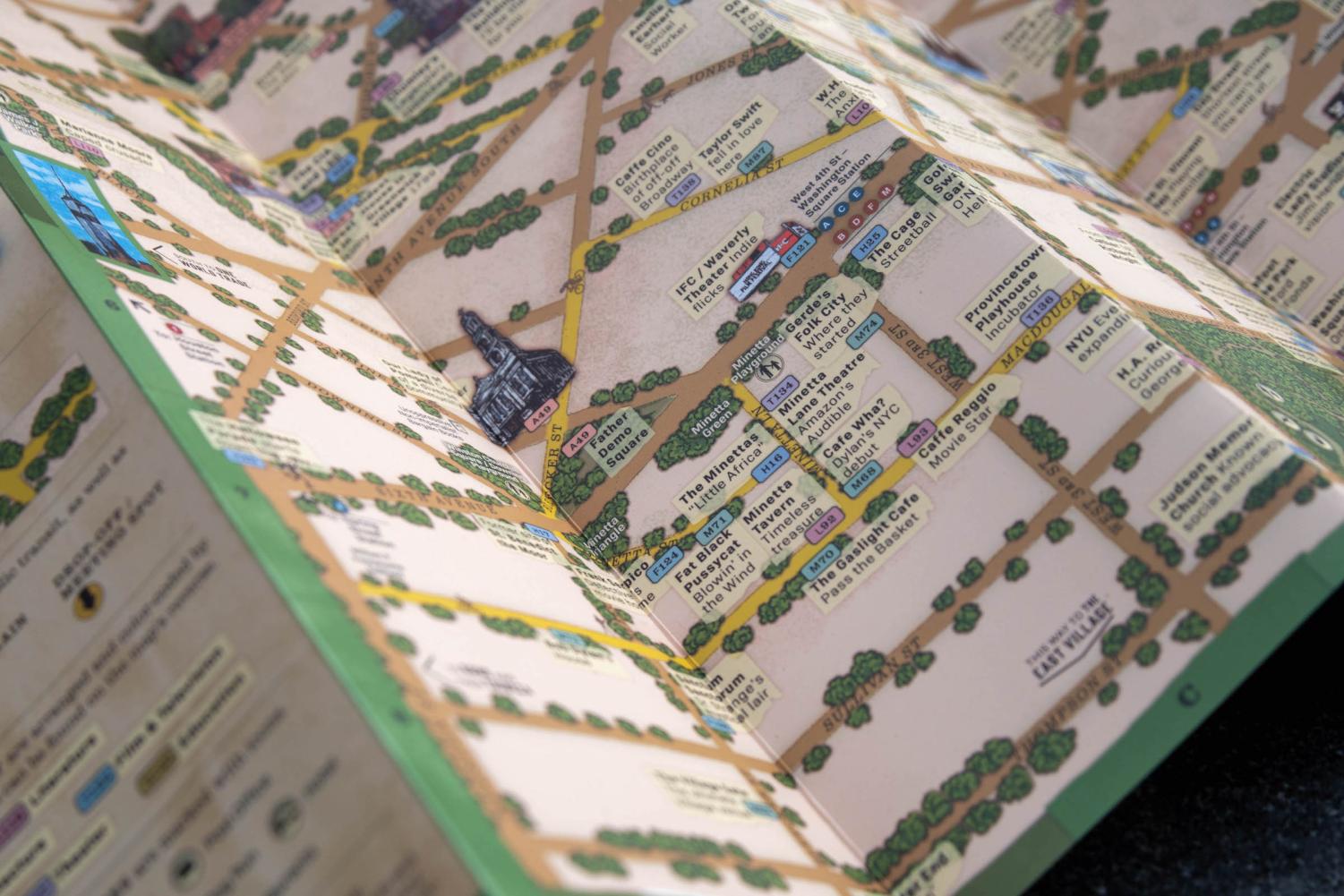
“Where is Greenwich Village?” is perfect for those trying to figure out where to take visiting loved ones or for those who simply need a new place to spend time in between classes. It’s the perfect gift to give your family when they fly in for commencement, or to welcome a friend moving to the city. With over 140 notes from Grossman on everything from where Taylor Swift fell in love to a myriad of historical and contemporary Village spots, you’ll always have ideas for places to go on campus, right in your back pocket. Purchase a copy (or many copies) for $12.95 at the Three Lives & Company bookstore, or online through Grossman’s website.
Developed for web by Kevin Wu.
Contact Susan Behrends Valenzuela at [email protected].

